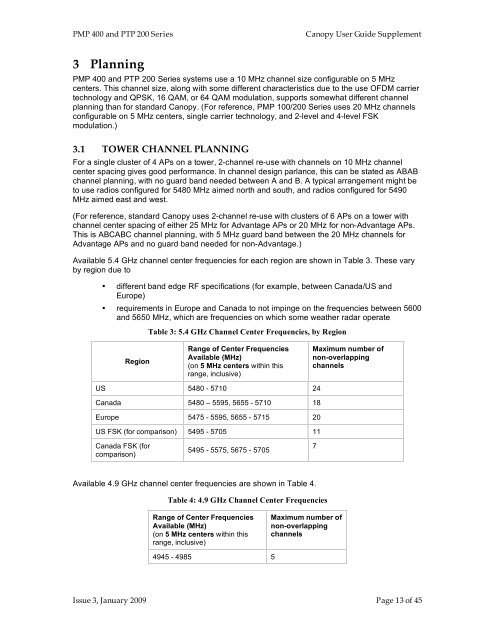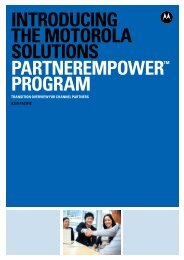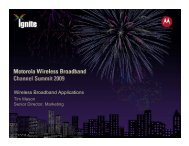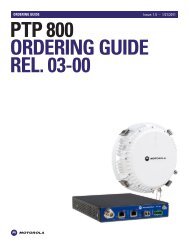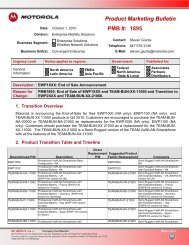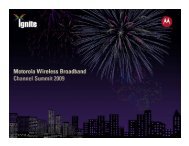Supplement to the Canopy System Release 8 User Guide PMP 400
Supplement to the Canopy System Release 8 User Guide PMP 400
Supplement to the Canopy System Release 8 User Guide PMP 400
You also want an ePaper? Increase the reach of your titles
YUMPU automatically turns print PDFs into web optimized ePapers that Google loves.
<strong>PMP</strong> <strong>400</strong> and PTP 200 Series<strong>Canopy</strong> <strong>User</strong> <strong>Guide</strong> <strong>Supplement</strong>3 Planning<strong>PMP</strong> <strong>400</strong> and PTP 200 Series systems use a 10 MHz channel size configurable on 5 MHzcenters. This channel size, along with some different characteristics due <strong>to</strong> <strong>the</strong> use OFDM carriertechnology and QPSK, 16 QAM, or 64 QAM modulation, supports somewhat different channelplanning than for standard <strong>Canopy</strong>. (For reference, <strong>PMP</strong> 100/200 Series uses 20 MHz channelsconfigurable on 5 MHz centers, single carrier technology, and 2-level and 4-level FSKmodulation.)3.1 TOWER CHANNEL PLANNINGFor a single cluster of 4 APs on a <strong>to</strong>wer, 2-channel re-use with channels on 10 MHz channelcenter spacing gives good performance. In channel design parlance, this can be stated as ABABchannel planning, with no guard band needed between A and B. A typical arrangement might be<strong>to</strong> use radios configured for 5480 MHz aimed north and south, and radios configured for 5490MHz aimed east and west.(For reference, standard <strong>Canopy</strong> uses 2-channel re-use with clusters of 6 APs on a <strong>to</strong>wer withchannel center spacing of ei<strong>the</strong>r 25 MHz for Advantage APs or 20 MHz for non-Advantage APs.This is ABCABC channel planning, with 5 MHz guard band between <strong>the</strong> 20 MHz channels forAdvantage APs and no guard band needed for non-Advantage.)Available 5.4 GHz channel center frequencies for each region are shown in Table 3. These varyby region due <strong>to</strong>• different band edge RF specifications (for example, between Canada/US andEurope)• requirements in Europe and Canada <strong>to</strong> not impinge on <strong>the</strong> frequencies between 5600and 5650 MHz, which are frequencies on which some wea<strong>the</strong>r radar operateTable 3: 5.4 GHz Channel Center Frequencies, by RegionRegionRange of Center FrequenciesAvailable (MHz)(on 5 MHz centers within thisrange, inclusive)Maximum number ofnon-overlappingchannelsUS 5480 - 5710 24Canada 5480 – 5595, 5655 - 5710 18Europe 5475 - 5595, 5655 - 5715 20US FSK (for comparison) 5495 - 5705 11Canada FSK (forcomparison)5495 - 5575, 5675 - 57057Available 4.9 GHz channel center frequencies are shown in Table 4.Table 4: 4.9 GHz Channel Center FrequenciesRange of Center FrequenciesAvailable (MHz)(on 5 MHz centers within thisrange, inclusive)Maximum number ofnon-overlappingchannels4945 - 4985 5Issue 3, January 2009 Page 13 of 45


